Tiltrotor of the future Bell HSVTOL
In early August, Bell Textron announced the HSVTOL (High-Speed Vertical Take-Off and Landing) project, the goal of which is to create a whole family of convertiplanes based on common solutions. The aircraft of the new line will be able to take off and land vertically, and develop high speed in horizontal flight. Several interesting ideas and technologies are proposed for solving such technical problems.
A forward-looking concept
The concept project HSVTOL proposes the creation of an aircraft architecture with the ability to scale for different tasks. In the published materials, three versions of the tiltrotor have already been shown - from a small-sized unmanned vehicle to a cargo vehicle in the dimensions of a C-130 aircraft. In addition, Bell is working on various additional systems, such as offshore platforms to support the operation of the UAV.
In all cases, the HSVTOL tiltrotor is a machine with a streamlined fuselage and a mid-wing, on the tips of which nacelles with propellers are placed. The tail is provided with a two-keel plumage. The main turboshaft / turbojet engine should be located in the upper or tail part of the fuselage, which is responsible for the rotation of the propellers and the creation of a jet stream in different flight modes.
It is assumed that the HSVTOL will take off vertically using two rotors. By turning the gondolas in the vertical plane, he will be able to switch to horizontal flight. For acceleration to maximum speeds, it is proposed to use jet thrust and wing lift; the propeller blades should be folded along the nacelles.
As stated, this scheme can be used to build aircraft of various sizes, carrying capacities and purposes. According to calculations, it is possible to exceed the flight speed of 400 knots (740 km / h). However, each project of the family will actually have to be developed separately using units and structures that correspond to the terms of reference.
In early August, Bell revealed only the alleged appearance of the new convertiplanes and some of their characteristics. The other day more has become known about the project: on September 10, The Drive, under the heading The War Zone, published an interesting article on this topic. In it, Jeff Nissen, Head of Advanced Technologies at Bell, spoke about stories development of convertoplanes and disclosed new data on the current project HSVTOL.
General approaches
The main task of the HSVTOL project is to achieve the maximum possible speed and range of flight. According to these parameters, the new samples should surpass the existing tiltrotors. For this purpose, some studies were carried out, during which the optimal level of flight performance was determined.
It has been established that the aircraft of the new scheme must develop a cruising speed of at least 400 knots. With less high speed requirements, you can use the "traditional" tiltrotor scheme, using propellers in all modes. The maximum speed should not exceed 0,85 M (more than 1000 km / h depending on the altitude). After exceeding this value, a significant increase in air resistance is expected. It can be overcome by increasing the thrust of the "sustainer" engine, but this will degrade fuel efficiency and reduce the possible range.
The calculated maneuverability of HSVTOL is higher than that of other converters. A light or medium vehicle will be able to make vigorous evolutions and fly around the terrain. However, achieving maneuverability at the level of modern fighters is impossible.
The tiltrotor glider is being designed with a reduction in visibility in mind, but its architecture and exterior limit the achievable results in this area. The ability to fold the propellers removes one of the main unmasking factors, however, even in this mode, the aircraft will be more noticeable than specially designed stealth aircraft.
Together with the tiltrotor, Bell is working on the basing issues. For example, UAVs of the HSVTOL family can be used with the Sea-based Logistics Unmanned Refuel / Re-arm Platform (SLURRP). The device will be able to land on such a platform, automatically refuel and rise again into the air. The medium aircraft can be used with larger platforms, crewed or autonomous.
Engine question
The main task of the HSTOVL project is to find the optimal power plant architecture. Bell is currently working on several options based on existing and future components. Some versions allow for the fastest possible bringing the project to testing, but limit the technical characteristics. Other schemes allow obtaining high flight data, but they are complex and require additional elaboration.
The simplest approach is proposed to be implemented in a light UAV project. Such a device should receive a "lifting" TVD with a transmission to both propellers and a "sustainer" turbojet engine. This scheme allows the development and testing of a prototype vehicle as quickly as possible using engines available on the market. However, it does not differ in weight efficiency and limits the overall level of performance.
For larger variants of HSVTOL, combined schemes are proposed, in which flight in all modes will be provided by one engine or several with the required total power. Calculations have already shown that the HPT will not give the required characteristics in the two main modes of operation, and therefore a different solution is needed.
At the theoretical level, the Pratt & Whitney F135 engine with a lift fan, developed for the F-35B fighter, was considered. For all its advantages, it shows insufficient traction and, at least, needs improvement. A hybrid scheme is being studied, in which the turbojet engine is connected to a generator, and the main rotor is rotated by an electric motor. This option is of interest, but so far it cannot show high fuel or weight efficiency.
The best option is considered a multi-mode gas turbine engine capable of alternately delivering more power to the shaft and creating high reactive thrust. However, products of this class have not yet advanced beyond testing, and the development of a new model will take an indefinite time. Therefore, in the short and medium term, Bell plans to study and develop only available products.
Oncoming flow
The propeller design developed for HSVTOL is of great interest. During the transition to high-speed flight, the apparatus must feathered the blades and then lay them along the gondola. The optimal design of such a propeller was created and tested back in 1972 and has shown all its advantages.
Folding of the blade is carried out by means of a hinge in the butt part. There are no drives. The blade should change its position only due to the incoming air flow. In this case, a braking system is provided that controls the speed of movement of the blades.
Tests in the early seventies showed the possibility of performing 30-40 folding and unfolding cycles at speeds of 150-175 knots (280-325 km / h) without interruption. Probably, the further development of the project, as well as the use of modern materials and technologies will ensure the operability of the original circuit and at 400 nodes.
Theory and practice
Thus, the HSVTOL project is still in its earliest stages, involving the development of basic ideas and the search for technical solutions. At the same time, the construction and testing of experimental equipment is still a matter of an uncertain future - while the developer company has to assess the real prospects of the project and determine the feasibility of its continuation.
As follows from official statements and messages, Bell Textron is optimistic about the future, and it is not just a desire to demonstrate its interest in promising developments. The company has extensive experience and expertise in vertical takeoff aircraft. In addition, new ideas and concepts are constantly being put forward, studied and put into operation. On the basis of old experience and modern proposals, they can really create a technique of a new class - or even a whole family.
However, excessive optimism is hardly appropriate. The proposed HSVTOL concept faces several serious problems, without solving which it will not be possible to create a tiltrotor with the required level of performance. In the near future, Bell Textron and related organizations will have to resolve all these issues - and then it will become clear what the tiltrotor of the future will be.
- Ryabov Kirill
- Bell Textron Inc., US Navy
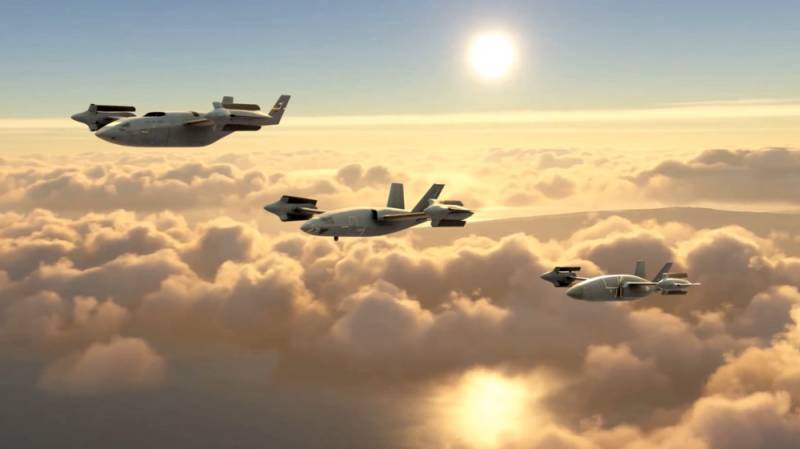
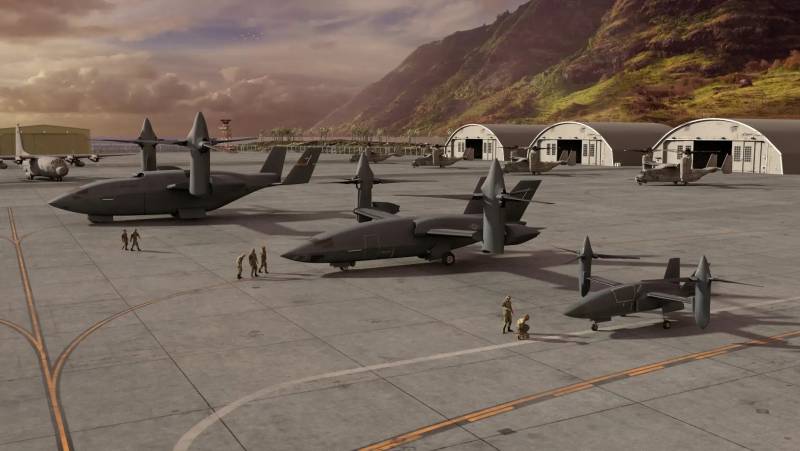
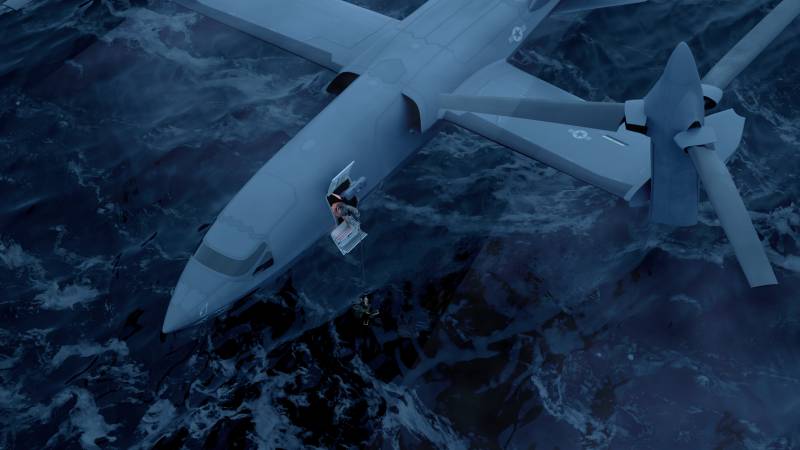
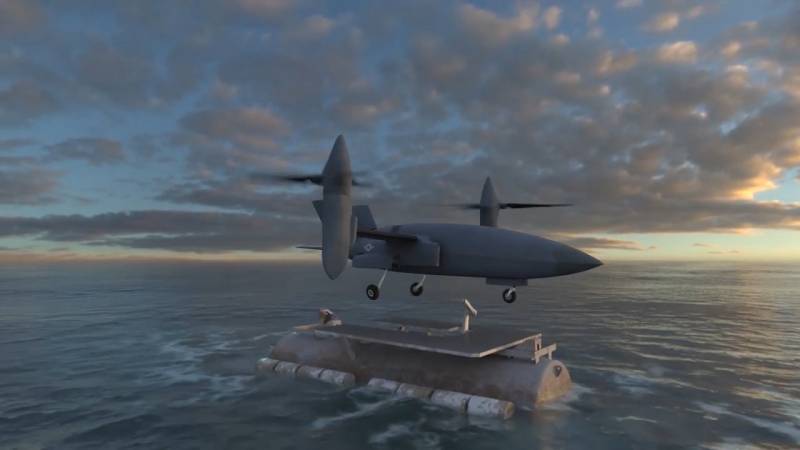
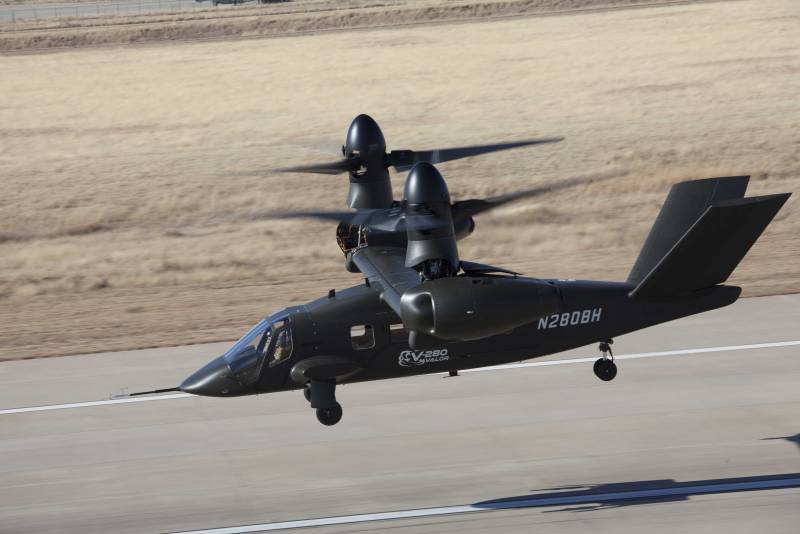
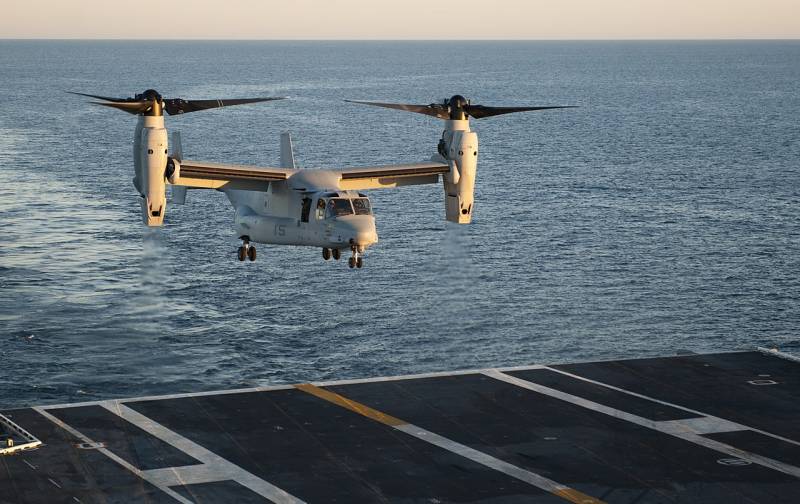
Information